Every factory floor needs special tools, jigs, and fixtures to help workers and robots in the manufacturing and assembly process of everything from cars to industrial equipment. So it’s no wonder that manufacturing is one of the biggest markets for professional 3D printing (additive manufacturing).
Taking weeks or months to design, test, redesign, and machine, heavy and expensive tool assemblies, jigs, or fixtures, just isn’t efficient. 3D printing has changed that. Manufacturers worldwide know that 3D printed tools, jigs, and fixtures are:
- Faster to prototype, test, and produce
- Made of fewer parts so less assembly labor and raw materials
- Lighter than solid metal and therefore easier to use
- Cheaper than solid aluminum and other materials
- More customizable and ergonomic because printing can make shapes machining can’t
- Available in many materials, from tough polymer to soft flexible elastomer
- Fast and easy to replace on demand by printing out a copy from the digital library
Replacing conventionally manufactured jigs and fixtures with 3D printed reduces overall fabrication expense, labor and time, but an even more significant advantage, manufacturers say, is the production-floor efficiencies created by having better jigs and fixtures delivered faster.
Nissan Replaces Machining with 3D Printing

The continuous need for new tools is what keeps factory engineers in a constant state change. Every new model, product, or version, requires updated tools, jigs, and fixtures. Taking too long to deliver them can stifle your company’s competitive edge.
At the Nissan automobile plant in Barcelona, Spain, tool prototypes and specific jigs used to be outsourced to mechanical suppliers, says Carlos Rellán Martinez, the manager of engineering maintenance and facilities at the plant, but they where were not very reliable in terms of cost, schedule, and flexibility. Then, in 2014, Rellán Martinez turned to 3D printing with open-source 3D printers from BCN3D and started printing gauges used to assess small parts, tools to protect vehicle exterior parts against damage during manufacturing, and supports used in kit trolleys to supply parts to the main line. “Our 3D printer runs nearly 24-hours a day and every year we’re printing about 100 different gigs and tools for a specific use in our processes,” says Rellán Martinez.
Outsourcing tools to a mechanical supplier turned out to be 20 times more expensive than 3D printing the same parts, says Rellán Martinez, while the wait for tools went from a week down to a day with 3D printing.
Indian Motorcycles Innovates Faster with 3D Printed Tools
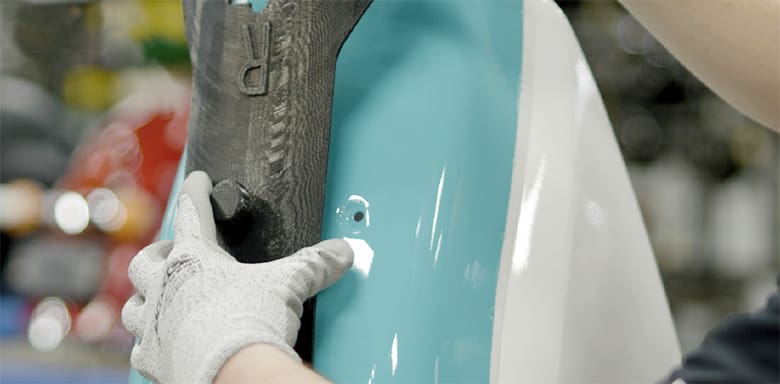
At Polaris Industries, maker of Indian Motorcycles, plant engineers adopted 3D printing to solve several challenges hampering efficiency.
One hurdle was the long tool design and iteration phase. Machining metal is slow and especially costly when a design turned out to have flaws. That’s why churning out functional tool prototypes on the company’s Stratasys 3D printers changed the engineering teams entire workflow.
“Instead of waiting between eight to 12 weeks, we’re able to get designs within 24 hours,” says Jenika Bishop, a senior project engineer at Polaris. “This lets you have more design process up front, so you have greater confidence when you kick off your final tools for production.”
Polaris also 3D prints final tools, not just prototypes, in a range of materials depending upon need. They’ve found the Stratasys flexible TPU material essential for assembly fixtures that won’t damage the paint on the motorcycles when fenders are installed.
Audi Expands Productivity with In-House 3D Printing

By producing almost all of its tools, jigs, and fixtures, Volkswagen Autoeuropa can skip the purchasing department and develop ideas for innovative or improved tools together with the operators. A new tool can be printed overnight, and the next morning it is tested on the assembly line by the operators. Their feedback can be incorporated in consecutive design iterations until the perfect tool is made. This tool can then be printed as many times as needed and at low costs.
Currently, the Volkswagen Group has more than 90 3D printers at 26 different sites. At its Audi R8 factory in Germany, at least one auxiliary tool leaves the 3D printing center each day, according to the company. The printed positioning guides, safety devices, and casting molds made by the company’s 3D printing team on Ultimaker and Makerbot printers to help their colleagues in the production department — quickly, inexpensively, and on-demand. “When designing a prototype, it is very important to us that we fulfill our colleagues’ wishes exactly,” says 3D team project manager Waldemar Hirsch. “Our goal is to provide our Audi colleagues the 3D-printed tool as quickly as possible, thus supporting them in their daily work.”
The 3D printing team identified several hundred applications where printed auxiliary tools offer substantial savings potential.
By locally producing the auxiliary tools, Audi saves itself long waiting times and long-haul shipping. Aside from that, the use of these printed innovations give them more flexibility as well as the ability to act quickly and with agility — and that’s what matters in day-to-day business.
Audi has taken a big leap in 3D printed metal tool production as well. Shifting part of its tool segment production activities from conventional manufacturing to additive manufacturing in 2021, the car maker now relies entirely on industrial 3D printing at its Metal 3D Printing Centre in Ingolstadt for the production of tools to make body panels for models including the Audi A4. The company plans to do the same for future electric vehicles. The metal 3D printers at work are from EOS.
Markus Glasser, senior vice president EMEA at EOS, says: “The latest examples show that 3D printing has become an established part of operating materials production at Audi.”
Are 3D Printed Parts Strong Enough?
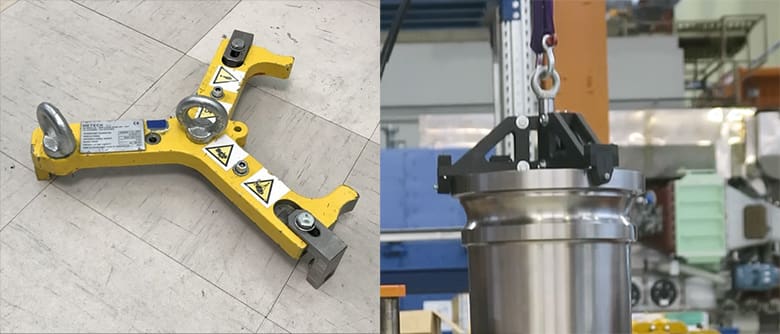
The Finnish company Wärtsilä manufactures large engines that power a third of the world’s largest cargo ships. The fabrication teams often need custom tools to solve problems and optimize efficiency. One such example is a lifting tool, which is critical to building and servicing large engines.
Wärtsilä usually machines its lifting tools out of solid steel, but found them to be too expensive, time-intensive to manufacture, and too heavy for people to use and transport. The teams are also unable to make quick design changes when needed. Engineers at Wärtsilä working alongside 3D printer manufacturer Markforged developed a printed tool out of carbon fiber reinforced polymer on the Industrial Series X7 printer. The team worked alongside international certification agency Bureau Veritas to define a process to certify the tools. The tool was put through various tests and inspections with international certification agency Bureau Veritas, resulting in the first 3D printed CE-certified lifting tool capable of lifting more than 2,000 pounds without deformation.
Strength and flexibility of 3D printed parts are determined by the printer, printing technology, material, and design. Heavy industry manufacturers around the world have successfully replaced machined metal tools with 3D printed metal and 3D printed polymers.
Is 3D Printing Fixtures Complicated?
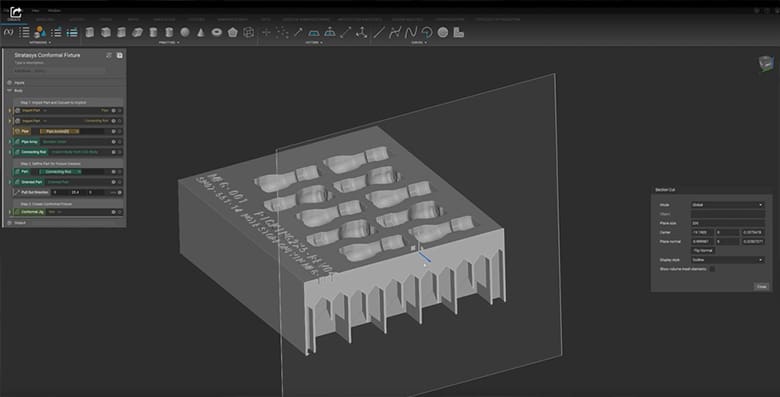
Today, nearly all tools, jigs, and fixtures start off as digital designs on a computer. Taking that digital design and sending it to a 3D printer is essentially the same process as sending it to a traditional CNC machine. Professional and industrial 3D printers today are relatively easy to learn and come with their own software for turning your designs into prints.
New software solutions specifically for tool and fixture 3D printing are making the technology even more accessible to engineers on the shop floor.
For example, Audi wanted to enable any employee who needs a tool from the 3D printer to design it personally without needing extensive prior knowledge. To that end, its in-house team of 3D printing specialists teamed up with software solution provider Trinckle, a company based in Berlin, to develop tool design software calibrated precisely to Audi’s needs.
“Our software makes the process of creating pre-assembly fixtures almost completely automated,” says Hirsch. “That allows us to make the necessary tools quickly and flexibly and to respond to specific requests from the planners or our colleagues on the assembly line.”
With the newly designed software, there is no need for the time-consuming process of manually sculpting models in computer-aided design programs, which cuts design time for tools by 80%.
Another new software solution, aptly named the FDM Fixture Generator, from engineering software company nTopology in collaboration with 3D printer manufacturer Stratasys, features drag-and-drop ease that turns a part file quickly into a ready-to-print fixture. The software aims to speed up the adoption and flatten the learning curve in the design and manufacture of custom jigs.
For industrial designers and engineers there’s no shortage of sophisticated engineering software to help in designing tools, jigs, and fixtures. Many additive manufacturing programs, such as AutoCAD and SolidWorks, can facilitate part improvements that are only possible with 3D printing. This may enable you to upload your existing tool digital design files and explore how they can be reengineered to be more efficient.
Which Type of 3D Printing is Best for Tools, Jigs, and Fixtures?

There is a wide variety of 3D printing technologies, printers, and materials all well suited to making tools, jigs, and fixtures. In fact, another advantage of 3D printing over traditional machining is that one 3D printer can print with a variety of materials from strong to flexible.
Your factory’s unique needs will dictate which technology or combination of technologies is best. Consider how many parts you expect to print, how strong those parts need to be, how big, how flexible, and how fast do you need them. You’ll also want to consider whether your parts will be made by a central tool shop or by staff on the factory floor.
Fused Deposition Modeling (FDM)
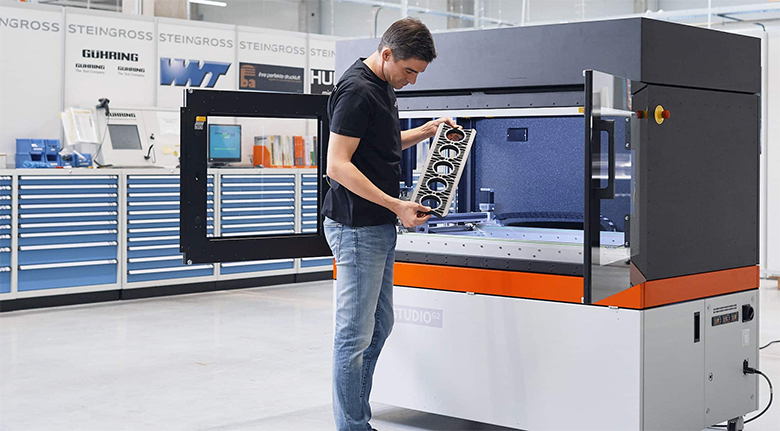
FDM printers, which can start as low as a few thousand dollars for a professional machine, have the advantage of size over other technologies. FDM also offers the widest array of materials to print with from wear resistant carbon fiber infused nylon to soft and flexible polyester. Plus, you can print in a wide variety of colors and even use eco-friendly recycled materials. You can expect an accuracy to within .2 mm on most professional and industrial machines.
Resin (Stereolithography)
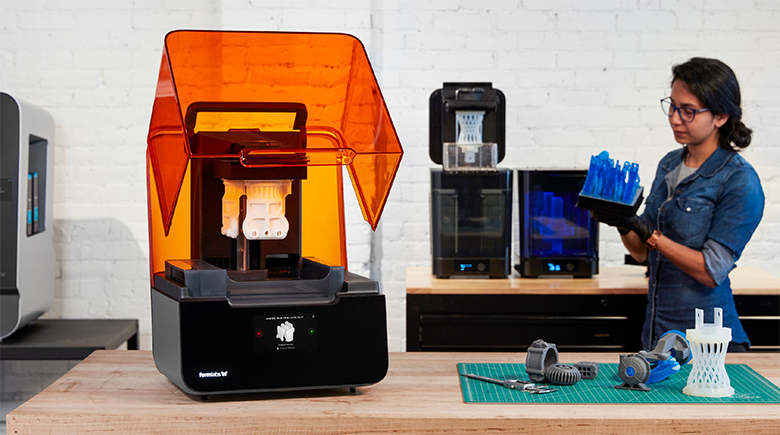
Not as popular for tools, jigs, and fixtures as FDM but no less effective, resin printers also feature a range material options. Industrial resins can produce parts with strong, clear, flexible or heat-resistant attributes, boasting an accuracy up to .05 mm. Resin prints feature a smooth surface ideal for printing molds, but one drawback it that parts out of the printer have to be cured before use, adding a bit of time to the processes.
Metal
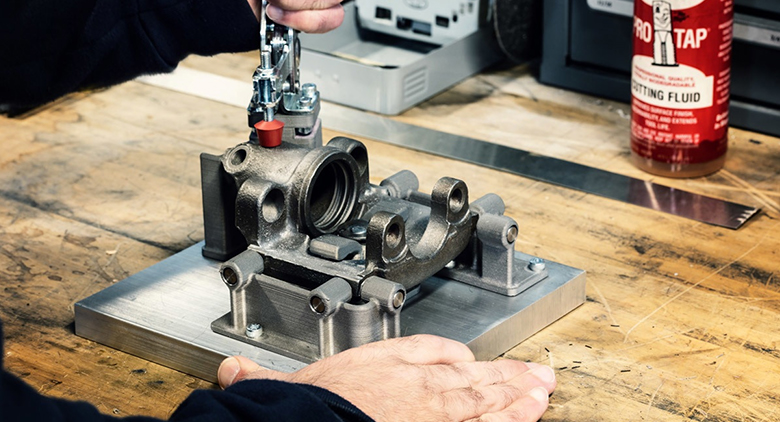
Many jigs and fixtures must be made of metal to comply with the conditions of the manufacturing environment, such as very high heat. The advantage of 3D printing metal compared to machining it is speed, cost, and efficiency. Metal 3D printing methods, such as Direct Metal Laser Sintering and Bound Metal Deposition, enable part consolidation and lighter weight metal parts because, instead of solid metal, the internal structure can be a strong lattice pattern.
Powder Bed Fusion
3D printing technologies that use a bed of plastic powder fused with a laser or another heat source produce parts that are incredibly strong and durable while also having flexibility. This category of technology includes selective laser sintering (SLS) and the professional machines are typically more expensive than FDM and SLA, making them a less popular option for tools, jigs, and fixtures.
Outsource Your 3D Printed Tools, Jigs, and Fixtures

There’s a growing worldwide availability of third-party 3D printing shops that will print your tools, jigs, and fixtures, to your specifications or assist you with design and material choice. Experimenting first with these companies is a smart way to get an idea of the technology and materials that will meet you needs. You’ll also get a sense of how fast a part can be produced and at what cost.
Check out our article below or visit Craftcloud, the 3D printing marketplace where you can upload your tool, jig, and fixture digital files and select from instant quotes provided by a wide range of global third-party 3D printing shops.
Lead image source: Desktop Metal
License: The text of "Better Jigs & Fixtures With 3D Printing" by All3DP Pro is licensed under a Creative Commons Attribution 4.0 International License.
